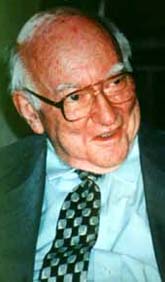Study on Creativity
DR . E PAUL TORRANCE
“Father of Creativity”
Dr. Ellis Paul Torrance was born in
Milledgeville, Georgia , on October 8,1915, and died on July 12, 2003.
Dr. Paul Torrance was known around the world as “Father of Creativity” for nearly 60 years of research. He became an 87 year old UGA professor that studied creativity of the brain. Dr. Paul Torrance dedicated his life to the development and acceptance to creativity.
Dr. Paul Torrance created the Torrance Test of Creative Thinking (TTCT), and the Torrance center, which is located in the Aderhold building on the UGA campus. Today the Torrance test is used by many different countries , and also schools in the USA for measuring creativity. Dr. Paul Torrance was a very kind man and helped many people, both children and adults.
Dr . Paul Torrance made a film , Manifesto for Children that documented Paul Torrance’s life and work. It was broadcasted on Georgia Public TV, in the fall of the year 2000. He also made a book Manifesto : A Guide to Developing a Creative Career, which includes his 40 year long study on creativity.
Dr . Paul Torrance also wrote a Manifesto for Children ,which has 7 famous sayings to remember. And they are …
1.Don’t be afraid to fall in love with some thing and pursue it with intensity.
2.Know, understand, take pride in, practice, develop, exploit, and enjoy your greatest strengths.
3.Learn to free yourself from the expectations of others and to walk away from the games they play on you.
4.Find a great teacher or mentor who will help you .
5.Don’t waste energy trying to be well rounded .
6.Do what you love and can do well.
7.Learn the skill of interdependence.

My Research on Creativity
Creativity comes from the latin term creo meaning “to create, make.” The first person to actually apply the word “creativity” was the polish poet Maciej K. Serbiewski, who applied it exclusively to poetry.
However, by the 18th century, the concept of creativity appeared more in art theory and linked with the concept of imagination. By the 19th century and 20th century discussions of creativity in the sciences (Jan Lukasiewicz, 1878 - 1956) and in nature (Henri Bergson) were undertaken.
Creativity is typically used to refer to the act of producing new ideas, approaches or actions.
Creativity although popularly associated with art and literature, it is an essential part of innovation and invention, and also important in professions such as businesses, economics, architecture, designing, mathematics, sciences, engineering and teaching.
Creativity has been associated with right or forehead brain activity and lateral thinking.
It is located on the right hemisphere while the left hemisphere controls rational and step-wise. The left side of the body controls the right side of the body and the right side of the body controls the left side of the body. Now Ideally , both sides of the body would be able to be both creative and rational.
Work in the field of creativity (J.P.Guildford) drew a distinction between convergent thinking and divergent thinking. Convergent thinking involves aiming for a single correct solution to a problem, and divergent thinking involves creating multiple answers to a set problem.
Creativity plays a major role in cognitive sciences, too. Many models of creativity have been proposed (Fink et al, 1992) the “Geneplore” model. A new integrative approach has also emerged under the label of conceptual blending.
“Creativity is the ability to illustrate what is outside the box from within the box.”
There are also research theories that suggest creativity may be linked to affective influences such as love and joy (fredrickson) and that these positive effects will broaden a person’s cognition and actions, thus enhancing creativity.
On the other hand, some theories have suggested that negative affects such as bipolar disorder and depression lead to greater creativity (University of Kentucky’s Arnold Ludwig).
Also, that creative achievement is often followed by feelings of elation. For example,
Albert Einstein called his 1907 general theory of relativity “the happiest thought of my life.”
Some researchers believe that creativity is the outcome of the same cognitive processes as intelligence. A popular model “the threshold hypothesis,” proposed by Ellis Paul Torrance holds that a high degree of intelligence appears to be a necessary but not sufficient condition for high creativity.
An alternative perspective by Renzulli’s three-rings hypothesis sees giftedness as based on both intelligence and creativity.
Research has suggested that creative innovation might require communication between different regions of the brain that ordinarily are not strongly connected.
Also, research on creative drive (Alice Flaherty, 2005) presented that the frontal lobe appears to be the most important part of the cortex that is most important for creativity. However, interaction between the frontal and temporal lobes, and dopamine for the limbic system are also important.
Creativity can be assessed by taking a creative thinking test . One of the creativity tests is the Torrance Test of Creative Thinking , that
Dr. Paul Torrance created in 1966, and was based on divergent thinking and problem-solving skills.